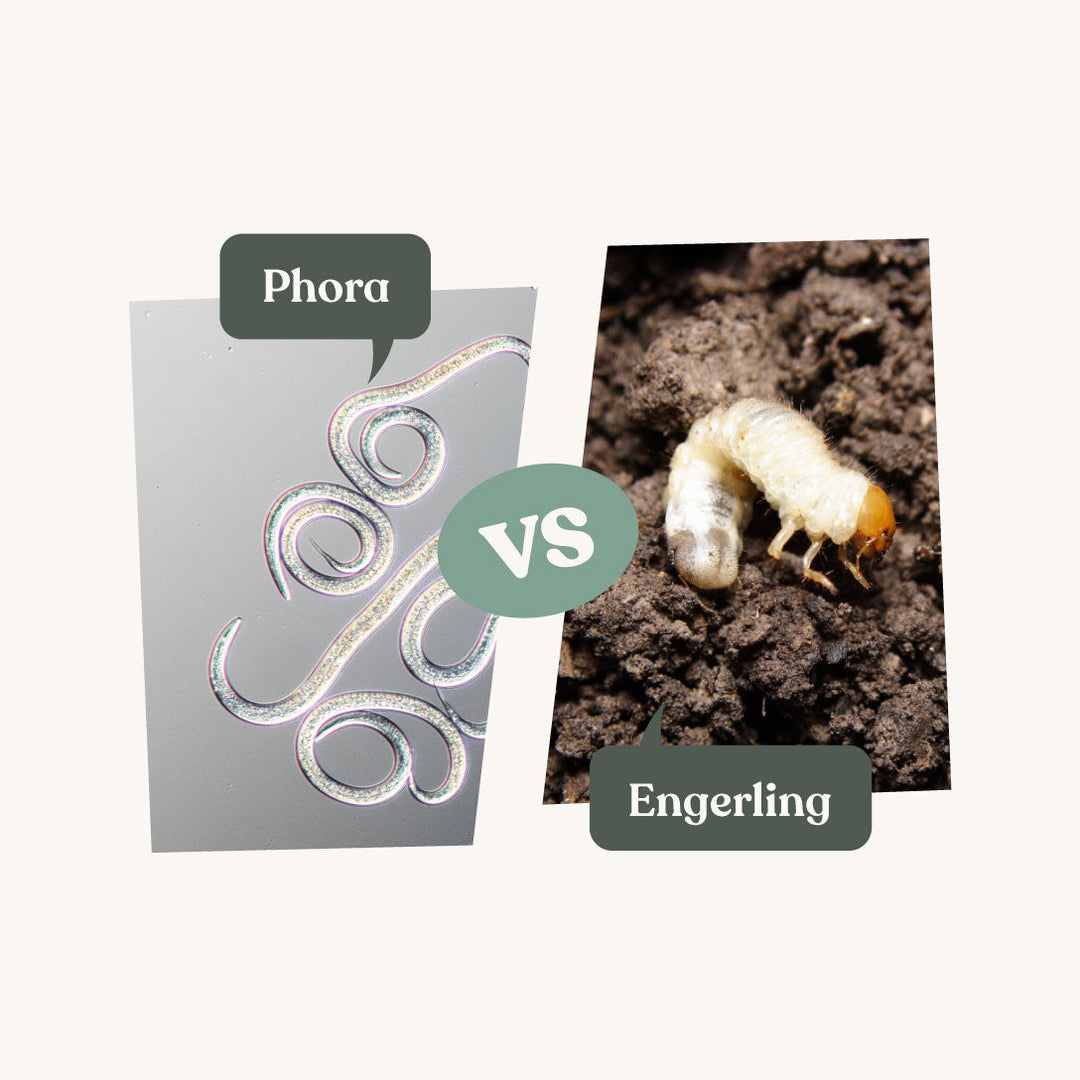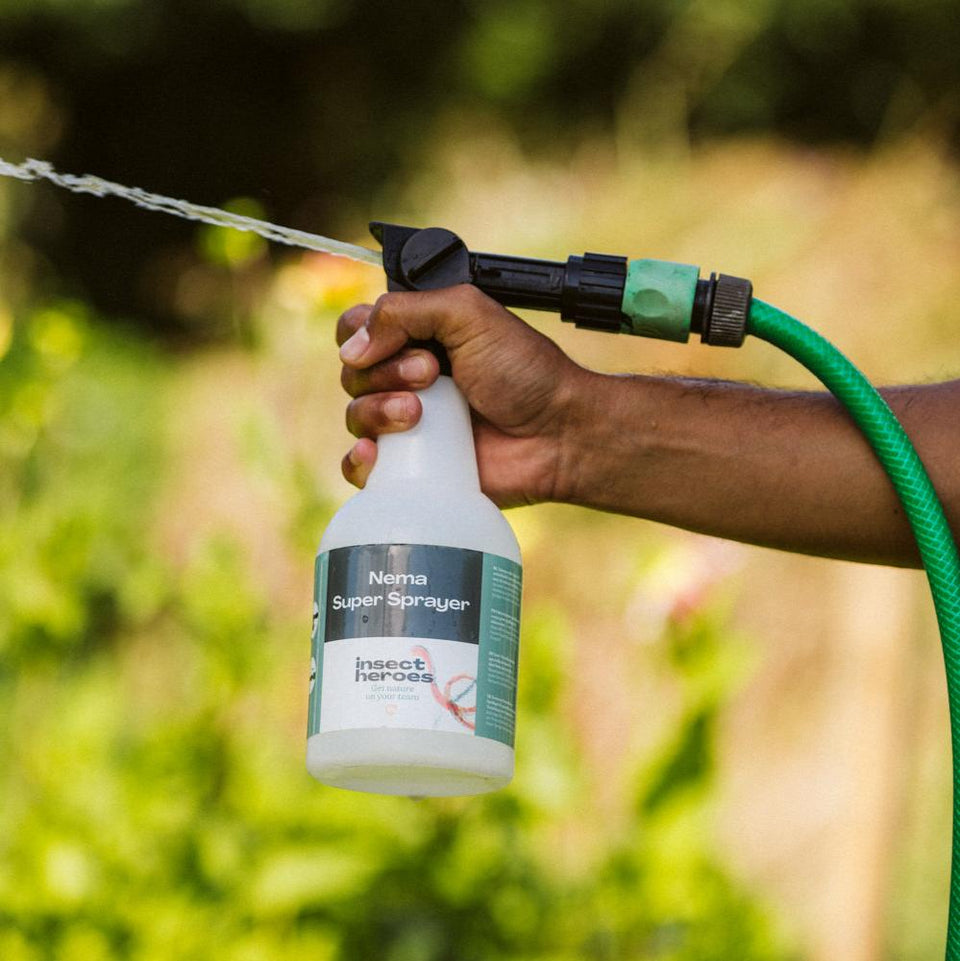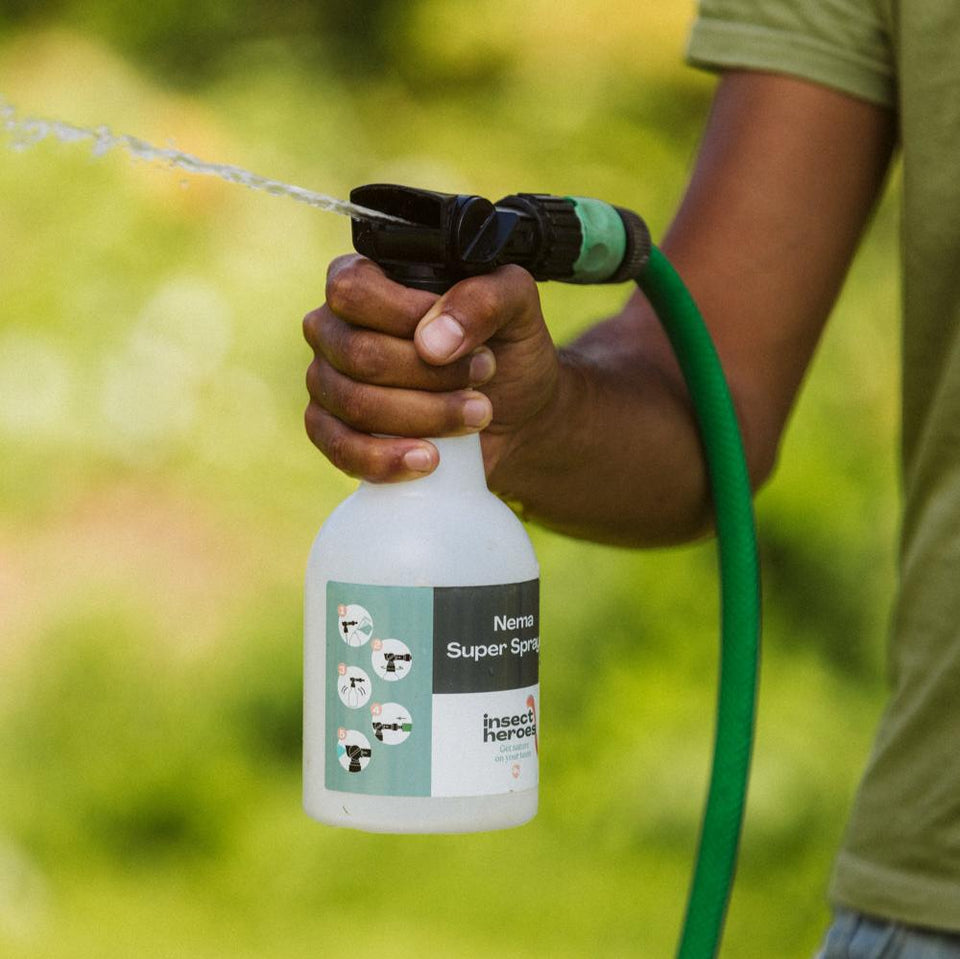Recognize, combat and prevent grubs
Wat zijn engerlingen?
Engerlingen zijn larven van verschillende soorten bladsprietkevers. In Nederland komen de de meikever, junikever, rozenkever en sallandkever het meeste voor.
Engerlingen leven in de grond en je zult ze daardoor ook niet snel waarnemen. De kever kan je wel zien vliegen, vooral in het voorjaar.
Engerlingen herkennen
Engerlingen leven in de grond en zijn daardoor soms lastig te vinden. Als je twijfelt of er engerlingen in je gazon aanwezig zijn, kun je bij een aangetast stuk gazon voorzichtig een stukje gras wegscheppen om te controleren of er engerlingen te zien zijn. Het identificeren van engerlingen in je gazon kan helpen om verdere schade te voorkomen en tijdig maatregelen te nemen.
Wanneer je ze opgraaft en in de hand hebt krullen ze op in een typische “C” vorm. De engerlingen kunnen tot vier centimeter groot worden en zijn helemaal beige van kleur, behalve de kop. De kop is kastanjebruin gekleurd. Vlak onder de kop kun je duidelijk een zestal poten onderscheiden. Dit is ook het kenmerk om de engerling van de emelt (larve van een langpootmug) te onderscheiden.
Engerlingen ontwikkeling
De levenscyclus van engerlingen begint met volwassen meikevers en andere kevers die van eind april tot en met juni rondvliegen, op zoek naar geschikte plekjes om hun eitjes te leggen. Deze eitjes komen na enkele dagen tot weken uit, meestal ongeveer vier tot acht weken nadat de volwassen kevers zijn waargenomen. De larven ontwikkelen zich vervolgens verder tot ze groot genoeg zijn om te verpoppen en uit te vliegen als volwassen kevers, die dan weer eitjes leggen. In Nederland duurt het meestal drie jaar tot de levenscyclus rond is.
Engerlingen schade
Kale en gele plekken gazon
Wanneer engerlingen zich massaal tegoed doen aan de wortels van gras, het best beschikbare type voedsel, sterft het gras boven de grond af. Zonder wortels kunnen de grasplantjes niet overleven en zullen ze boven de grond zichtbaar in gezondheid achteruitgaan. Dit is helaas te zien aan gele of kale plekken in het gazon. Deze plekken met geel en dood gras kun je gemakkelijk optillen omdat de wortels ontbreken. Ook wortels van andere tuinplanten kunnen de engerlingen aantasten.
Vogels en mollen
Naast de vraatschade van de engerlingen kunnen ook hun natuurlijke vijanden, zoals vogels en mollen, schade aanrichten. Niets zal deze dieren tegenhouden om het lekkere hapje uit de grond te halen, zeker niet een mooi gazon. Hierdoor zie je vaak stukken omgewoeld gras waar deze dieren op zoek zijn gegaan naar engerlingen.
Engerlingen bestrijden met aaltjes
Engerlingen kun je eenvoudig en effectief bestrijden met Phora aaltjes.
De meest effectieve aaltjes tegen engerlingen zijn Phora, die actief zijn vanaf 12 graden, maar het meest effectief zijn bij temperaturen boven de 18 graden. Phora dringt de engerlingen binnen en doodt ze binnen enkele dagen door middel van een bacterie die deze nematode altijd meedraagt.
Wanneer engerlingen bestrijden?
Het beste kunnen de engerlingen worden bestreden als ze nog kleiner zijn dan twee centimeter. Dat is ongeveer vier tot acht weken nadat de volwassen kevers gezien zijn. Dat is meestal van juni tot en met september. Wanneer je geen kevers hebt zien vliegen kan je het beste in augustus of september bestrijden.
Ook in het voorjaar, zo tussen april en eind mei, kunnen de larven van vorig jaar nog bestreden worden. Wat belangrijk is voor de timing van de bestrijding is de bodemtemperatuur, dus bestrijdt niet te vroeg, maar zeker ook niet te laat in het jaar.
Omdat engerlingen meerdere jaren leven als larve moeten ze elk jaar worden bestreden. Hierdoor bestrijdt je de jonge engerlingen voordat ze groot kunnen worden. Wanneer je veel overlast hebt adviseren 2 tot 3 behandelingen per jaar met minimaal een maand ertussen.
Onze biologen houden de voortgang van de ontwikkeling in de gaten van deze engerlingen, hierdoor weten wij wanneer het beste moment zich aandient om te bestrijden. Houdt onze nieuwsbrief in de gaten om op de hoogte te zijn van deze momenten.
Engerlingen voorkomen
Wanneer je geen kevers hebt gezien en juist deze plaag wilt voorkomen, dan kan je het beste Phora aaltjes toepassen in augustus of september.
Andere manieren om engerlingen te bestrijden
Engerlingen bestrijden met knoflook
Engerlingen en emelten zou je door de sterke geur van knoflookextracten kunnen weren. Echter is dit voor jezelf ook geen fijne lucht! Er wordt beweerd dat de groei van engerlingen door de knoflook wordt belemmerd, hoewel hier geen wetenschappelijk bewijs voor is gevonden.
De knoflook zorgt er niet voor dat de engerlingen worden bestreden of verdwijnen.
Engerlingen chemisch bestrijden
Je kunt ervoor kiezen om engerlingen chemisch te bestrijden. Echter, wij raden dit sterk af omdat je daarmee niet alleen de engerlingen treft, maar ook het hele bodemleven. Deze stoffen werken meestal op het zenuwstelsel van insecten en maken geen onderscheid tussen verschillende soorten. Hierdoor wordt het hele bodemleven ernstig aangetast, wat vervolgens invloed heeft op de plantgezondheid en je mooie gazon. Vanuit onze missie en visie raden wij daarom altijd aan om een ecologische manier van plaagbestrijding te gebruiken.
Weet je niet zeker van welke plaag je last hebt?
Bekijk de overzichtspagina met alle plagen.




















































